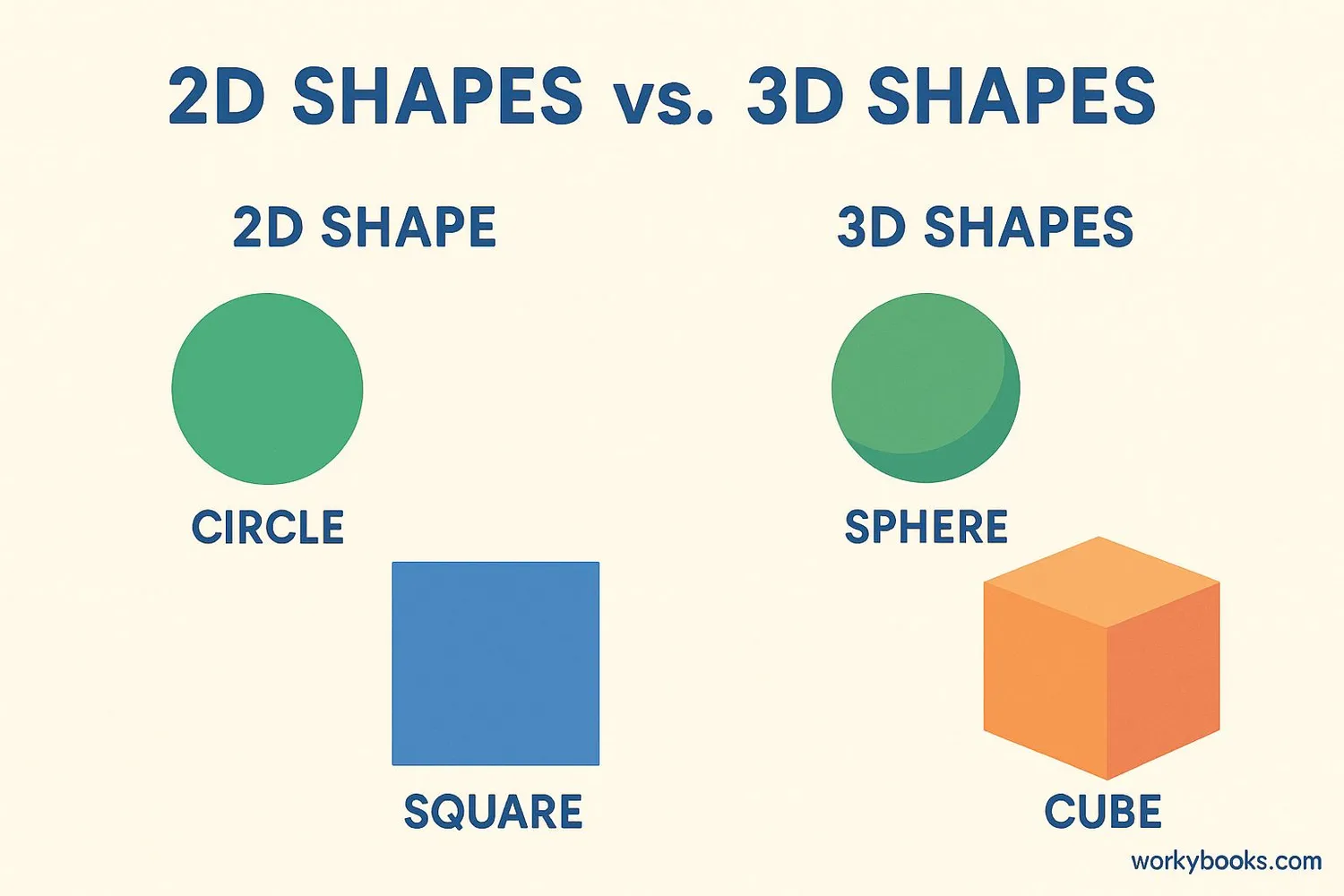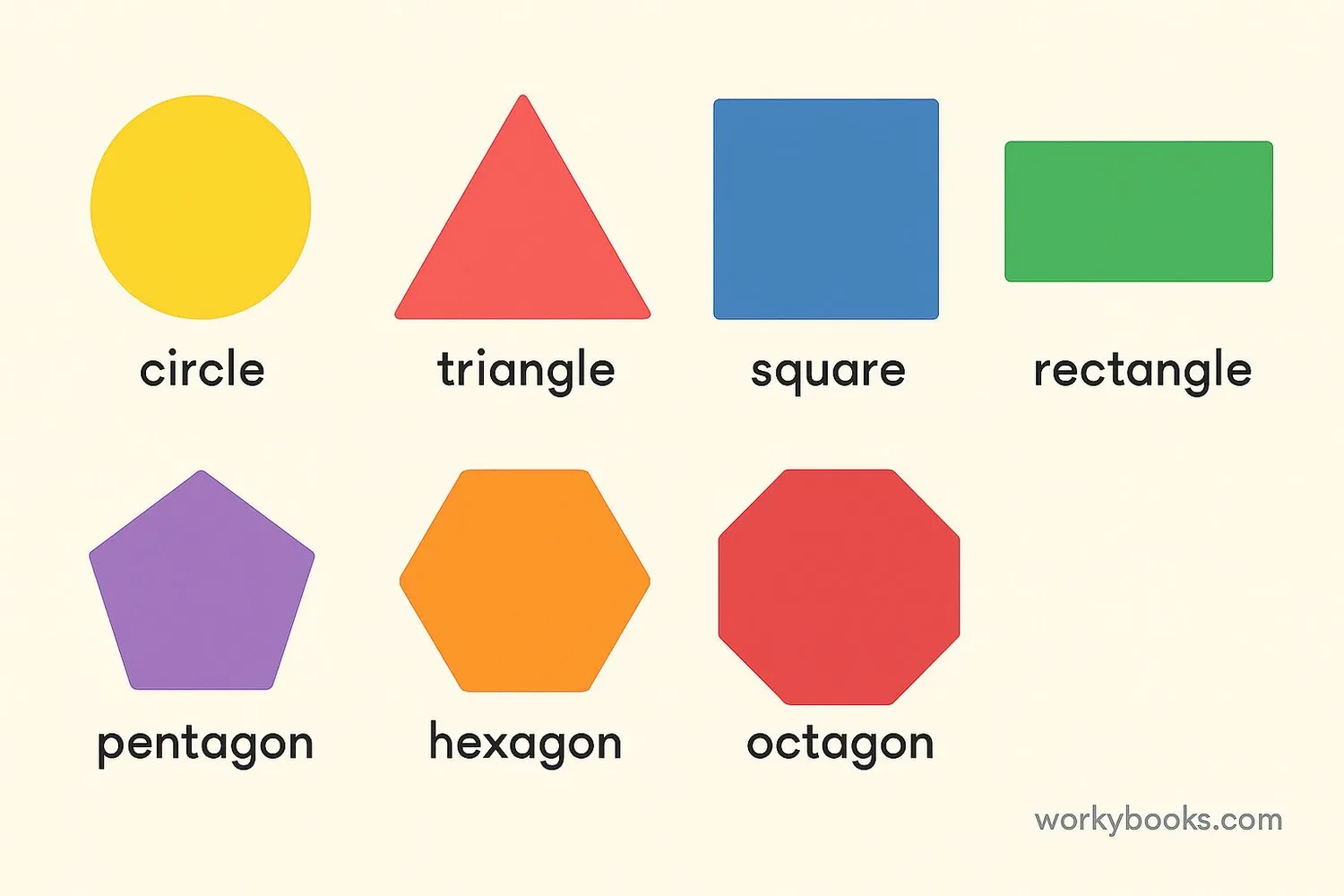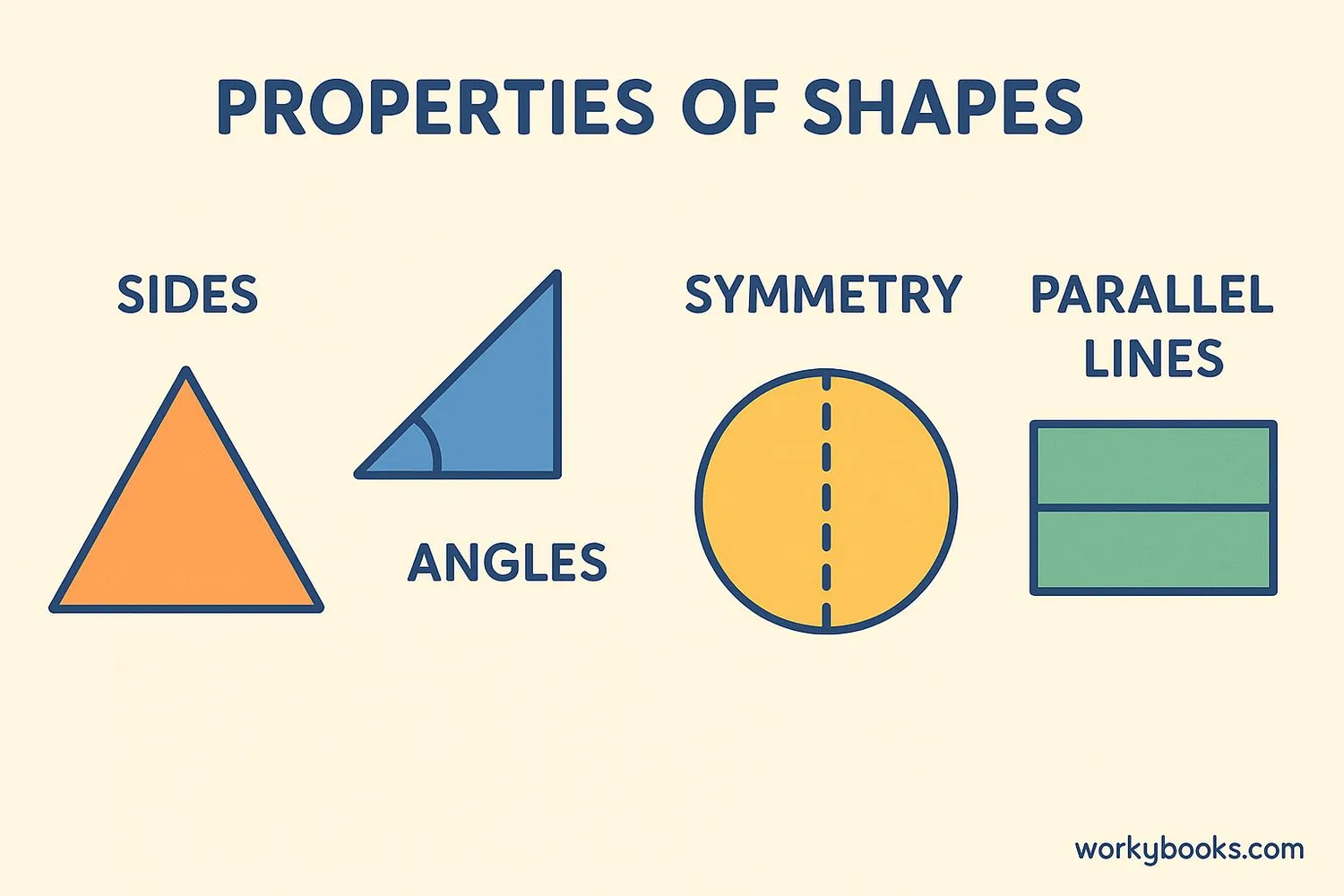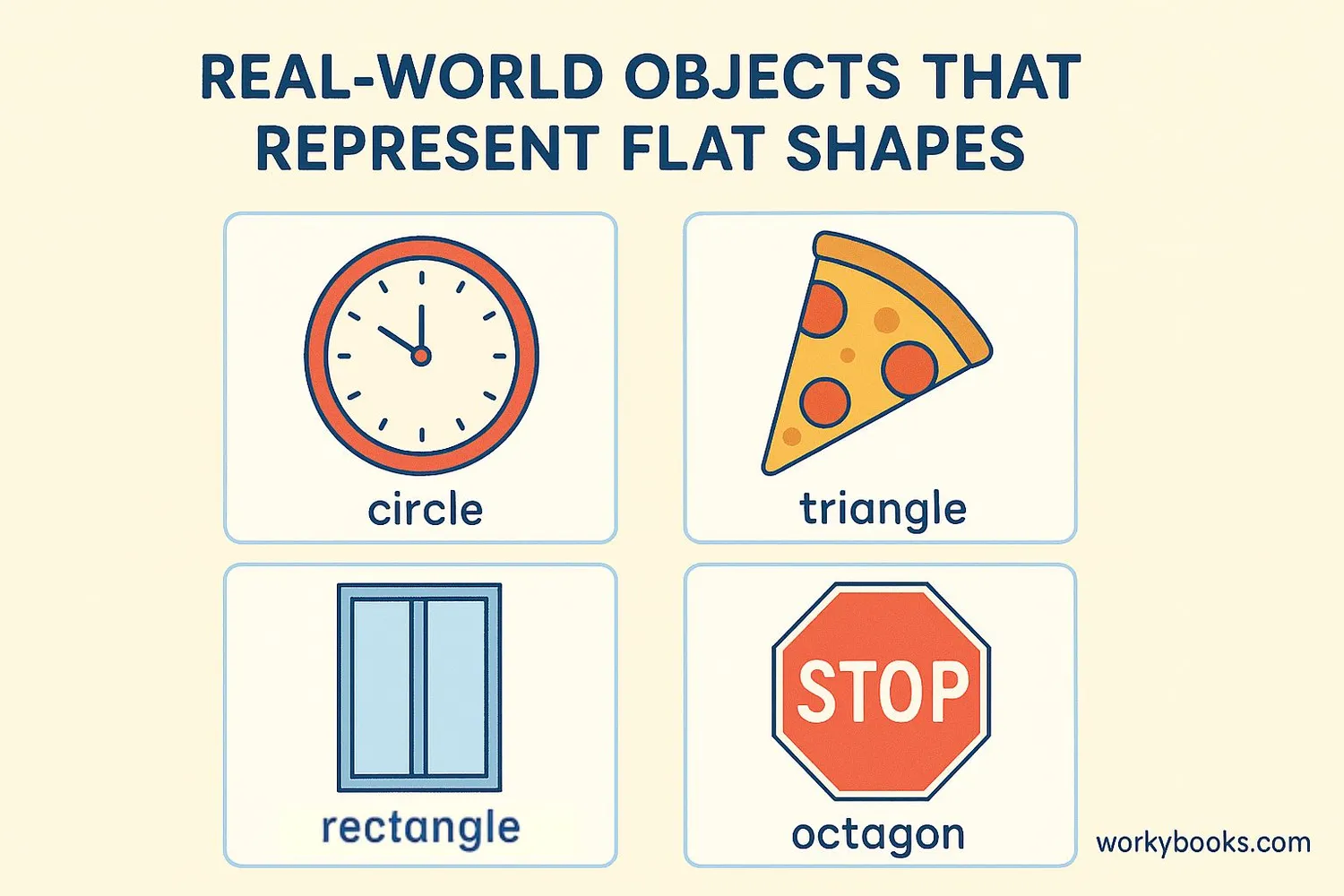Flat Shapes - Definition, Examples, Quiz, FAQ, Trivia
Learn about 2D shapes with easy explanations, visual examples, and practice activities
What are Flat Shapes?

Flat shapes are shapes that have only two dimensions: length and width. We also call them 2D shapes or plane shapes. Unlike solid shapes (3D) that have depth, flat shapes are completely flat - like drawings on paper.
Some common flat shapes include:
- Circles
- Squares
- Triangles
- Rectangles
- Pentagons
- Hexagons
Flat shapes are all around us! You can find them in books, on signs, in artwork, and even in nature. Learning about these shapes helps us understand patterns, solve problems, and create designs.
Key Concept
Flat shapes have only two dimensions - length and width. They don't have depth like solid objects.
Types of Flat Shapes

Flat shapes come in many different types. We can group them by the number of sides they have:
Shapes can also be categorized as:
Polygons: Shapes with straight sides (triangles, quadrilaterals, pentagons, etc.)
Curved shapes: Shapes with curved sides (circles, ovals, etc.)
Understanding these different types helps us describe and work with shapes in math and everyday life.
Properties of Flat Shapes

Each flat shape has special properties that make it unique. Here are some important properties to know:
Sides
Sides are the straight lines that form the boundary of a shape. The number of sides helps us name shapes (triangle = 3 sides, quadrilateral = 4 sides).
Corners (Vertices)
Corners (also called vertices) are the points where two sides meet. A triangle has 3 corners, a square has 4 corners.
Angles
Angles are formed where two sides meet. We measure angles in degrees. Right angles are 90°, acute angles are less than 90°, and obtuse angles are greater than 90°.
Symmetry
Symmetry is when a shape can be folded along a line and both halves match perfectly. Squares have 4 lines of symmetry, while circles have infinite lines of symmetry!
Remember
All polygons (shapes with straight sides) have the same number of sides and corners. A triangle has 3 sides and 3 corners, a pentagon has 5 sides and 5 corners.
Real-World Examples

Flat shapes are everywhere in our world! Here are some examples you might recognize:
Circles
Clocks, coins, wheels, pizzas
Triangles
Pizza slices, road signs, sailboat sails
Squares
Chess boards, sticky notes, tiles
Rectangles
Doors, books, smartphones, flags
Pentagons
Home plate in baseball, some signs
Hexagons
Honeycombs, nuts and bolts, snowflakes
Activity Idea
Look around your classroom or home. How many different flat shapes can you find? Make a list of objects and the shapes you see in them!
Flat Shapes Quiz
Test your knowledge about flat shapes with this 5-question quiz. Choose the correct answer for each question.
Frequently Asked Questions
Here are answers to common questions about flat shapes:
Geometry Trivia
Discover interesting facts about shapes and geometry:
Ancient Geometry
The ancient Egyptians used geometry over 4,000 years ago to survey land after the Nile River flooded each year. They needed to redraw property boundaries accurately.
Shapes in Nature
Hexagons appear frequently in nature because they're the most efficient shape for packing. Beehives use hexagons to store the most honey with the least wax.
Architectural Shapes
The Pentagon building in Washington D.C. is the world's largest office building with five sides. Each outside wall is 921 feet long!
Infinite Sides
A circle can be thought of as a polygon with an infinite number of sides. The more sides a polygon has, the more it resembles a circle.





